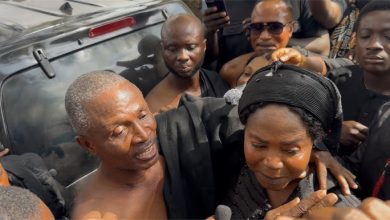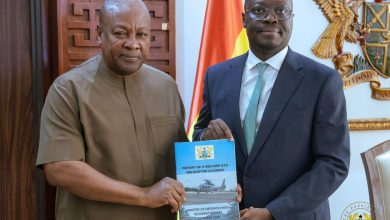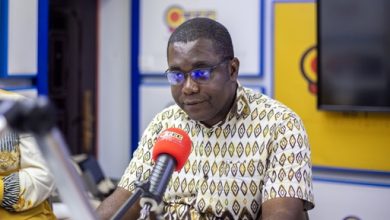Historic Asante’s gold and bronze artworks returned to Otumfuo Osei Tutu II in Kumasi

A remarkable chapter in Ghana’s cultural history unfolded in Kumasi as 130 gold and bronze artworks created in Asante from the 1870s were formally returned to the Asantehene, Otumfuo Osei Tutu II, at the Manhyia Palace.
The centuries-old artefacts, which embody the governance systems, craftsmanship, and the economic symbolism of gold in Asante society, have been restored to the Manhyia Palace Museum in Kumasi, the regional capital.
The pieces, aged between 45 and 160 years, were returned through the combined efforts of AngloGold Ashanti and British art historian Hermione Waterfield, on Wednesday, November 5, 2025.
The Chief Corporate Affairs and Sustainability Officer of AngloGold Ashanti, Stuart Bailey, received the Asantehene’s gratitude when he visited with other officials including the Managing Director of the Obuasi Mine, Samuel Boakye Pobee, and former Member of Parliament for Obuasi, Edward Ennin.
The Asantehene commended the gesture, noting that although AngloGold Ashanti had acquired the artefacts through legitimate markets, they “thought it appropriate to give back to the source from which they were taken.”
According to the Historian and Director of the Manhyia Palace Museum, Ivor Agyeman-Duah, 110 of the returned pieces came from the Barbier-Muller Museum in Geneva, originally collected by Josef Muller in 1904.
The remaining 25 artefacts were donated by 86-year-old Hermione Waterfield, a renowned British art historian who joined Christie’s in 1961 and later established its Tribal Art Department in 1971.
Waterfield’s contribution includes a 46-inch wooden ‘fontomfrom’ drum, one of the items looted during the 1900 siege of Kumasi led by British colonial officer Sir Cecil Hamilton Armitage.
She also donated 14 gold weights acquired between 1967 and 1973, along with the iconic brass self-portrait of the late British art historian Timothy Garrand, sculpted in Kumasi by Yaw Amankwa in 1980.
“The late Garrand, who lived in Kumasi and Accra, helped shape our understanding of gold and bronze heritage in West Africa,” Agyeman-Duah explained.
The Manhyia Palace Museum will soon showcase the restituted works alongside masterpieces by celebrated Ghanaian and African artists, including Ablade Glover, El Anatsui, Ato Delaquis, Nee Owoo, Anthony Kwame Akoto, Vincent Koffi, and Edwin Kwasi Bodjawah.
Agyeman-Duah, who signed the deaccession papers with Waterfield in London last October, described the return as “a significant act of cultural restoration and historical justice for the Asante people.”
Source: Ghana/otecfmghana.com/Francis Appiah




